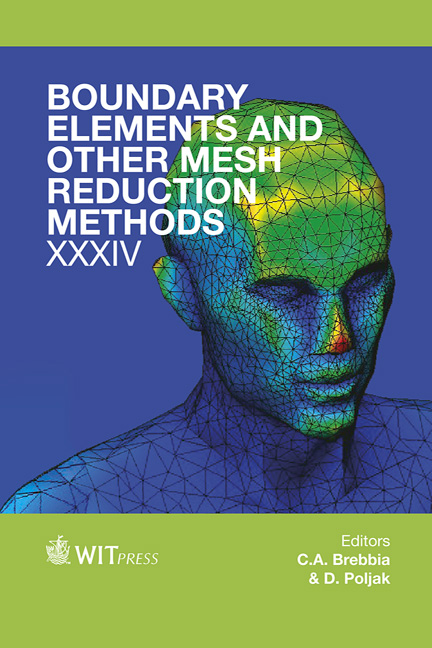Imposing The Boundary Conditions In The LBIE/RBF Method: A Simplified Approach
Price
Free (open access)
Transaction
Volume
53
Pages
10
Page Range
63 - 81
Published
2012
Size
405 kb
Paper DOI
10.2495/BE120061
Copyright
WIT Press
Author(s)
E. H. Ooi & V. Popov
Abstract
A simple approach for imposing the boundary conditions in the local boundary integral equation (LBIE) method is proposed. The proposed approach maintains the weak formulation on the boundary by enforcing the integral equation derived from the Green’s second identity and the fundamental solution of the Laplace equation. Unlike in the LBIE, the subdomains at the boundary in the proposed method preserve their circular shapes, such that difficulties associated with the evaluation of near-singular and singular integrals and the determination of intersection between the global and local boundaries can be avoided. The proposed approach is compared with the conventional LBIE by solving the convection-diffusion equation. The unknown field variables were approximated with the RBF approximations. Numerical results showed that the proposed method, despite its simplicity, yielded results of comparable accuracy with the LBIE when third order RBF was used. Keywords: local boundary integral equation, weak formulation, radial basis functions, meshless methods, companion solution. 1 Introduction The local boundary integral equation (LBIE) method is a meshless method developed by Zhu et al. [1] that combine s th e advantag es of se veral numerical methods including the Galerkin finite element method, the boundary element method and the element-free Galerkin method. Implementation of the LBIE involves the distribution of collocation nodes over the boundary and interior of the solution domain, whereby a circular (spherical in 3D) subdomain centred on each node is generated. In each subdomain, the integral equation derived from the governing equation holds. The LBIE introduces the concept of
Keywords
local boundary integral equation, weak formulation, radial basis functions, meshless methods, companion solution.





